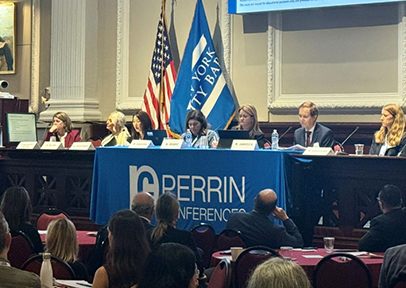By: Kristen Drake
Earlier this month, I joined a national discussion at Perrin Conferences’ Sexual Abuse Litigation and Coverage about the evolving landscape of sexual abuse and sex trafficking claims. The conversation underscored an important truth: organizations often have untapped insurance assets that can help them respond responsibility and compassionately.
At PolicyFind, we define insurance archaeology as the process of locating and documenting proof of old insurance policies that may have been lost or destroyed over time. These policies, often written decades ago, can represent significant financial protection for institutions that are now working to do the right thing, whether that means funding survivor settlements, supporting ongoing litigation, or addressing claims transparently.
What Insurance Archaeology Investigations Looks Like in Sexual Abuse and Trafficking Claims
My focus on the panel was the process and components of insurance archaeology, what it looks like in practice when we are brought in to help an organization locate historic coverage that may respond to sexual abuse or trafficking claims.
I walked through some of the key components of an investigation. We always start with a collaborative approach and what I call ‘boots-on-the-ground work’, reviewing old boxes, archives, and internal files that might contain policy references or correspondence. We also talk to people. Long-tenured staff, former brokers, or even retired administrators often remember which carriers or agents were involved, and those memories can point us to new evidence.
From there, we review company records such as meeting minutes, annual reports, and accounting ledgers. My team cross-references those findings with our internal policy library and database of historical insurer information. Together, these steps help us reconstruct a timeline of coverage and identify which insurers may have issued policies during key periods.
Of course, those steps describe a best-case scenario. In many cases, our insurance archaeologists face real challenges: clients with no existing documentation to review, or long-tenured staff and former brokers with limited recollections. When that happens, we rely on proprietary processes that have consistently produced leads to historical insurance over more than 20 years of investigations.
Turning Evidence into a Clear Coverage Map
Once we have located evidence, organizing it becomes just as important as finding it. We build detailed coverage maps, track the source and quality of every document, and create logs that link each piece of evidence to the related claim period. This structure makes it easier for legal teams and carriers to evaluate the findings and for clients to understand exactly what was uncovered.
Our goal is to turn what might look like a stack of old papers into a clear, usable coverage picture. For many organizations, that process transforms uncertainty into a plan for how to move forward.
Why Recovering Historical Coverage Matters for Survivors and Institutions
Working on these matters reminds me why this work is so meaningful. Behind every insurance archaeology project are real people and institutions trying to take responsibility in difficult circumstances. Finding and validating old coverage does not erase the past, but it gives organizations the resources they need to respond with honesty and compassion.
If your organization is navigating complex sexual abuse or trafficking claims, and you are unsure whether historic coverage might exist, our team at PolicyFind can help. Through decades of insurance archaeology investigations, we’ve helped institutions uncover lost-long coverage that allows them to respond with integrity and compassion. Sometimes, those policies are still out there, waiting to help you do what is right.

